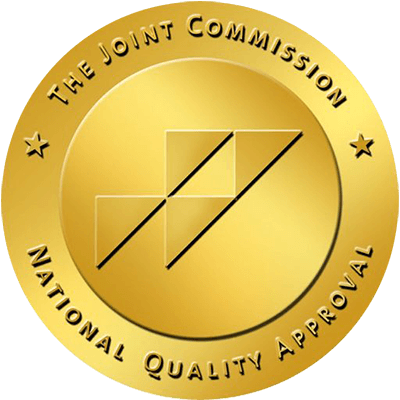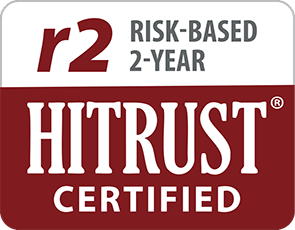Written by Ashley Kane,
Brightside Health
7 Minute Read

Medically reviewed by:
Conor O’Neill, PHD
Assoc. Director of Therapy
10 Minute Read

Depression is not a one-size-fits-all condition.
But what types of depression are there? There are many different types of depression, and understanding them can help you or someone you care about find the right treatment.
Depression examples involve psychological, physical, and social symptoms.
In this article, we’ll explore the most recognized types of depression, including their symptoms, causes, and how they differ.
If you’re wondering what types of depression there are, this guide is for you. By seeing examples of depression and its different forms, you’ll be better informed to get the help you need.
Are There Different Types of Depression Disorders?
Yes, there are several types of depressive disorders, each with unique characteristics.
Some are more severe, some are triggered by life events, and others are linked to changes in brain chemistry or seasonal patterns.
There are different types of depression. Learning about the depressive disorders list is one step towards learning how to deal with depression. Being better informed means you or a loved one can get the help that best matches your needs.
What Are the Different Types of Depression?
Let’s break down some of the most common and clinically recognized different depression disorders. Depressive disorders include:
1. Major Depressive Disorder (MDD)
Also known as clinical depression or unipolar depression, MDD is one of the most common types.
Symptoms:
- Persistent sadness or low mood
- Loss of interest in activities once enjoyed
- Fatigue or lack of energy
- Changes in appetite or weight
- Sleep disturbances
- Feelings of worthlessness or guilt
- Trouble concentrating
- Thoughts of death or suicide
Risk Factors:
- Family history of depression
- Major life stressors or trauma
- Chronic medical conditions
- Substance abuse
2. Persistent Depressive Disorder (Dysthymia)
This is a chronic form of depression lasting for two years or more.
It’s less intense than MDD but longer-lasting.
Symptoms:
- Low mood for most of the day, most days
- Low energy or fatigue
- Poor self-esteem
- Sleep and appetite changes
- Hopelessness
Risk Factors:
- Long-term stress or illness
- Personality traits like pessimism
- Family history of depression
3. Bipolar Disorder (Manic Depression)
Bipolar disorder includes episodes of depression and episodes of mania or hypomania (less severe manic episodes).
There are different types of bipolar disorder: Bipolar I, Bipolar II, and Cyclothymic. Bipolar I is characterized by full-blown manic episodes; Bipolar II by hypomanic episodes and major depressive episodes; and Cyclothymic by persistent, milder mood swings between these episodes.
Symptoms (Depressive Episodes):
- Sadness, hopelessness
- Persistently low mood
- Fatigue and low energy
- Sleep disturbances
- Changes in weight or appetite
- Difficulty concentrating
- Restlessness or slowed movement/speech
- Feelings of emptiness or guilt
Symptoms (Manic Episodes):
- Euphoria or irritability
- Increased energy and activity
- Decreased need for sleep
- Racing thoughts
- Rapid speech
- Risky behavior
- Inflated self-esteem
- Flight of ideas
- Possible delusions and hallucinations
Risk Factors:
- Genetic predisposition
- High-stress situations
- Substance abuse
4. Seasonal Affective Disorder (SAD)
This form of depression is related to seasonal changes, often occurring in fall and winter.
Symptoms:
- Fatigue
- Sadness or hopelessness
- Difficulty concentrating
- Social withdrawal
- Oversleeping
- Weight gain
- Cravings for carbohydrates
Risk Factors:
- Living far from the equator
- Family history of SAD
- Low serotonin levels
5. Postpartum Depression
Affects women after childbirth and is more intense than the “baby blues.”
Symptoms:
- Intense sadness or mood swings
- Difficulty bonding with the baby
- Sleep disturbances
- Anxiety or panic attacks
- Thoughts of harming self or baby
Risk Factors:
- Hormonal shifts after birth
- History of depression
- Lack of support
- Stressful life events
6. Premenstrual Dysphoric Disorder (PMDD)
A severe, disabling extension of premenstrual syndrome (PMS).
Symptoms:
- Mood swings
- Irritability or anger
- Anxiety or tension
- Fatigue
- Bloating
- Breast tenderness
- Headaches
- Changes in appetite
- Skin changes
- Changes in sleep patterns
- Depressed mood
Risk Factors:
- Hormonal changes
- Sensitivity to mood-related neurotransmitters
7. Major Depression With Psychotic Features
This is major depression accompanied by psychotic symptoms relating to the individual’s depressed mood.
Symptoms:
- Delusions relating to feelings of guilt, worthlessness, or paranoia
- Hallucinations, including critical voices or voices of condemnation
- Disorganized thinking
- Agitation
- Increased risk of suicide
Risk Factors:
- Family history of psychosis
- Substance use
- Severe trauma or stress
Understanding Different Levels of Depression
What are the types of depression levels? Depression levels can vary from mild and situational to severe and chronic.
Recognizing the depression stages—from early warning signs to full-blown symptoms—can help individuals seek timely treatment.
Some people may experience only one episode, while others might face recurring or long-term symptoms.
How to Recognize Depression Types
Knowing the different forms of depression helps with early recognition and appropriate treatment.
Consider:
- How long symptoms have lasted
- How much they interfere with daily life
- Whether they’re tied to external events or not
- If there are co-occurring symptoms like mania or psychosis
Talking to a healthcare provider or using a digital tool can help narrow down what you’re experiencing.
What Type of Depression Do I Have? Take a Test and Find Out
All types of depression should be evaluated to determine if they require attention. If you’re asking, “What type of depression do I have?”, a good starting point is an online assessment.
Brightside offers a clinically backed depression test to help you identify symptoms and potential treatment paths.
Take the depression test to find out if you’re potentially suffering from depression. Further evaluation by a medical professional will help determine the subtype.
Key Takeaways
There are many types of depression disorders, each with unique features that can affect people differently. Understanding the specific type of depression you’re experiencing can help guide the most effective treatment options.
From major depressive disorder to seasonal and psychotic depression, every kind has evidence-based treatments available.
Online tools and mental health professionals, including Brightside, offer accessible ways to identify and treat your symptoms.
FAQs
What are the depression types unique to women?
Depression types unique to women include postpartum depression and premenstrual dysphoric disorder (PMDD), both tied to hormonal changes.
They may occur after childbirth or before menstruation and often require specialized care.
What is the worst type of depression?
What is the worst form of depression? Clinical depression and major depression with psychotic features are often considered the most severe due to their impact on reality and difficulty responding to standard treatments.
Early and intensive care is crucial.
What are some other words for depression?
Other terms include low mood, despair, melancholy, and major depressive disorder.
These terms may vary based on severity or clinical diagnosis.
How many types of depression are there?
There are at least 7–10 well-recognized types, including MDD, dysthymia, bipolar depression, SAD, postpartum depression, psychotic depression, and PMDD.
The actual number may vary depending on classification systems.
What is the most severe form of depression?
Psychotic depression and severe major depressive disorder are among the most serious.
These often involve loss of touch with reality or risk of suicide.
Depression vs clinical depression: What’s the difference?
“Depression” is a broad term, while “clinical depression” refers to a diagnosable condition—typically major depressive disorder (MDD)—that meets specific criteria.
Clinical depression vs major depression: What’s the difference?
They are often used interchangeably.
Major depression is the clinical term for what many people call clinical depression.
Major depression vs depression: What’s the difference?
Major depression is a specific diagnosis under the umbrella of depression diagnosis types.
Not all depressive states qualify as major depression, which requires meeting certain diagnostic criteria.













